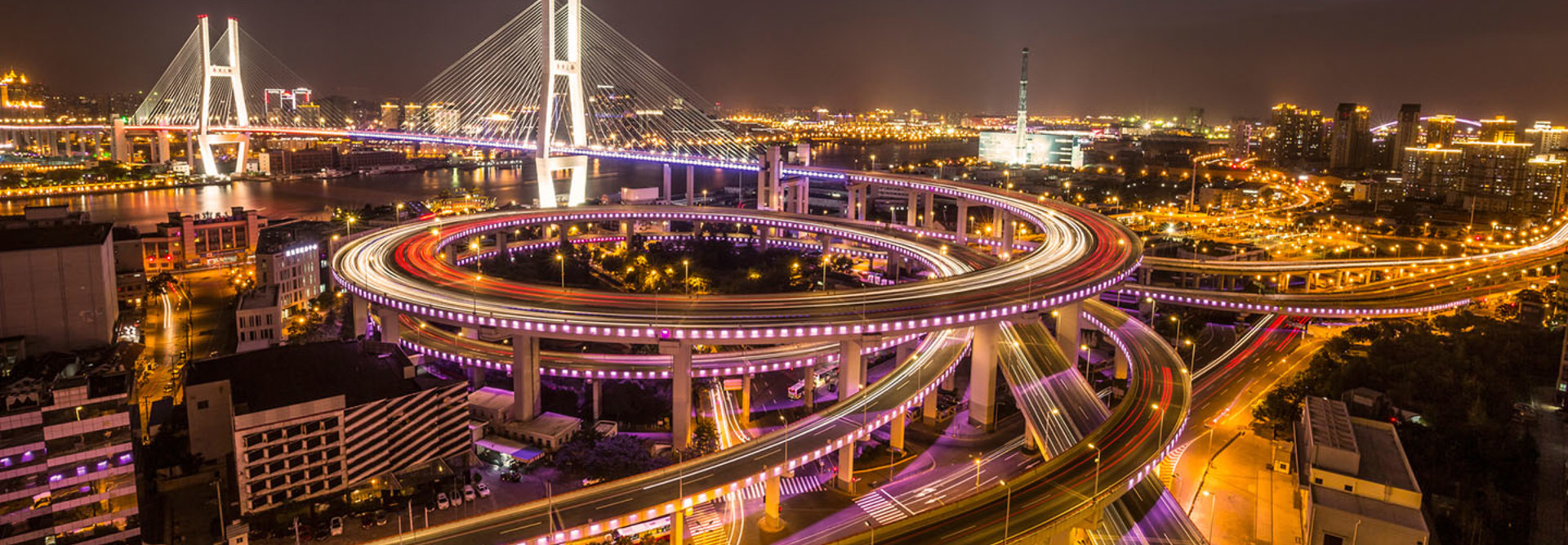Intelligent Transportation Systems Save Cents for Main Street
As smart city deployments begin to take off, intelligent transportation systems are proving to be consequential investments for cities that can dramatically decrease traffic and parking woes while increasing economic opportunity for residents.
The systems include everything from driverless cars to smart traffic signals. Through sensors, analysis and communication between systems, intelligent transportation systems aim “to ease congestion, improve traffic management, minimize environmental impact and increase the benefits of transportation to commercial users and the public in general,” according to TechTarget.
Even with the absence of vehicles, motion-activated dusk-to-dawn lights can keep cities illuminated, making them safer for pedestrians while saving money.
Because these systems provide clear benefits to cities and residents, and are easy to justify funding through energy-saving properties, several cities, counties and states are beginning to install intelligent transportations systems as they begin forays into smart city projects. In fact, forecasts project that the market value of ITS will skyrocket to more than $57 billion by 2024, a huge uptick from an already-impressive market value of $20 billion in 2015.
But with such wide-reaching mobility implications, it can be hard to shake out exactly how intelligent transportation systems are hitting the streets. Here’s a look at how large and small localities alike are making use of ITS:
SIGN UP: Get more news from the StateTech newsletter in your inbox every two weeks
Columbus, Ohio, Buoys Opportunity with ITS
If you’re looking for a mobility revolution in the works, look no further than Columbus, Ohio, the winner of the U.S. Department of Transportation’s Smart City Challenge and $50 million in grants. The city has used the funding to launch several technology deployments aimed at driving economic growth, spurring innovation and increasing quality of life for residents.
A major lynchpin in this effort is the move to significantly upgrade mobility throughout the city. Government officials and private partners alike are hoping to build upon existing transit and connectivity infrastructures to alleviate traffic stress and help those in lower socio-economic areas reach doctor appointments and job opportunities, as well as address other tangible community challenges.
Specifically, the city has several projects on the Smart Columbus docket around mobility, including:
- Connected vehicles — The city will install devices in cars that allow vehicles to communicate with each other and potentially prevent collisions, as well as notify drivers of possible issues. And, taking it one step further, connected electric autonomous vehicles are on the horizon.
- Multimodal trip planning — Right now, if you’re looking to use public transit or take part in ridesharing, you’ll need a plethora of apps and information. The city is looking to launch a single hub for all transit needs to pull all info into one place and make trip planning a breeze.
- Smart mobility hubs — Much like the apps, this initiative aims to move all forms of transit — biking, driving and busing — into a single physical location so residents always know where to start their journey.
- Collision avoidance — This new camera system installed on city buses will “spot potential human-bus collisions and alert COTA bus drivers to it,” according to the Smart Columbus website. Moreover, that data will be used to better plan bus routes in the future.
“The desire here is to be the epicenter of intelligent transportation technology solutions. Much in the same way as information technology, a lot of the efforts there, are being developed in Silicon Valley,” Jeffrey Ortega, the city’s deputy communications director, told StateTech. “This is about people being able to use technology to enhance themselves and being able to get them to opportunities that will help them in many areas of their lives.”
In conjunction with the county, Ohio University, and private partners such as the Transportation Research Center, the city has started several pilots to trial intelligent transportation systems.
“We want to implement the technology to make our roadways safer, easier, faster and cheaper to get around on,” Randall Bowman, the city’s assistant director of public service, told StateTech of the city’s connected vehicle pilots. “This is a first step to better transportation and greater access to transportation.”
Systems Ease Traffic and Boost Pedestrian, Driver Safety
While Columbus may have one of the largest-scale ITS projects around, the city isn’t alone in implementing the tech.
Las Vegas is equipping much of its downtown with smart streetlights as part of a partnership with Cisco Systems to expand the connectivity infrastructure in its Innovation District. It hopes to improve mobility, sustainability and provide insight into a host of city issues.
City leadership is leveraging sensor technology at 18 intersections to detect traffic patterns and change the pace of streetlights accordingly to keep traffic moving. This will ease downtown travel and cut down on carbon dioxide (CO2) emissions from cars that would be idling at stoplights, the city’s director of technology and innovation, Michael Sherwood, told StateTech.
Moreover, it will also serve to keep pedestrians safe from oncoming traffic.
“Excitingly, we are currently testing our pedestrian safety technology, and using LIDAR remote sensing in the intersections to detect a wrong-way driver or a pedestrian that steps onto the crosswalk at the wrong time. We’re able to change the light from green to red so oncoming cars will stop,” says Sherwood. LIDAR, which stands for light detection and ranging, is a type of radar that uses pulses of light to detect an object’s movement and distance.
Following suit is the Maryland Department of Transportation State Highway Administration, which recently announced plans to improve the flow of traffic — which can be some of the worst in the nation — with AI-backed traffic signals.
The smart signals will use detection software to “monitor traffic conditions and alter the timing of traffic signals,” based on factors that can contribute to congestion, such as vehicle collisions and construction, a press release from Governor Larry Hogan states. The signals will receive data through sensors placed on traffic light poles and in the road’s pavement itself, State Highway Administrator Gregory I. Slater told The Baltimore Sun.
Intelligent Systems Make Parking Simpler
But vehicles don’t have to be in motion for there to be issues with congestion. Anyone that’s been downtown on a Friday night knows that parking can be a drag. But connected systems can make parking a breeze by dynamically pricing parking spaces, alerting drivers to open spots and allowing city officials to better visualize and manage space.
In Cary, N.C., for example, the town recently teamed with Cisco to better manage parking in its downtown using Cisco Kinetic for Cities, which will allow the city to monitor the number of available parking spots and provide insights on how to develop and arrange parking in the future.
And in the famed traffic city of Los Angeles, the Los Angeles Department of Transportation embedded wireless sensors on 6,300 parking spaces and in some city-owned parking lots to detect whether spaces are open or occupied. From there, parking management software keeps tabs on parking meter traffic data, analyzes it and alerts transportation officials as to how to better price parking based on demand. This all works in conjunction with a mobile app and electronic signs that can alert residents to parking availability downtown.
“People that park regularly get savvy and know where they can find bargains,” Peer Ghent, project manager for LA Express Park, the city’s intelligent parking management system, told StateTech. “To be candid, many people who go downtown are not aware of anything we did, but they benefit from it. If there’s more parking because we raised the price, they are happy because they can find a parking spot. And if they find something cheaper, they are happy, too.”









